The 10 Most Exciting Cars (and Bikes) of CES 2019
They aren't kidding when they say CES has become a car show. Here are the 10 coolest rides we saw this week.
LAS VEGAS — There's a new stop during auto show season, and it just so happens to be the Las Vegas Convention Center's North Hall.
When people say that CES is turning into a car show, they aren't exaggerating. The world's top automakers are choosing the tech convention to unveil their solutions for the future of mobility. The ideas are as far-flung as they are wide-ranging. Admittedly, there wasn't much shown on the show floor that you can drive today. However, as manufacturers continue to develop their autonomous systems, we'll be seeing bits and pieces reach cars currently in production — and that has us excited.
Here are the most remarkable vehicles that made it to CES 2019:
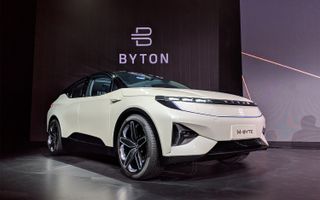
Byton M-Byte
The M-Byte electric SUV that Byton brought to CES is, more or less, a similar prototype to what we've seen before from the startup Chinese automaker. However, the company took the opportunity to illustrate it's finalized vision for the crossover's interior. The M-Byte will sport a total of five screens when it launches in China in 2019, and in the U.S. in 2020. The party piece is the 48 inch-long, touch-sensitive display that stretches from pillar-to-pillar, enveloping the dashboard in light. We are still not quite sure how Byton will be able to pull this off in a car that is expected to start at a base price of around $45,000, but it's certainly captured our attention now.

Nissan Leaf Plus
The Nissan Leaf has been on the market a while, and as a consequence, it's been surpassed by newer electric vehicles in terms of range and power. That's where the new Plus model comes in. This variant of the Leaf can run an estimated 226 miles between charges — about 76 miles longer than the standard electric car. It also benefits from a livelier motor, with a peak output of 150 kW, or about 200 horsepower. Those are two changes that will certainly go a long way toward making the Leaf a more compelling daily driver, though Nissan is remaining tight-lipped on pricing. However, we expect the MSRP to land somewhere in the region of $40,000.

Hyundai Elevate
Yes, the Hyundai Elevate's appearance borders on nightmare fuel, with its spindly, retractable legs — making it all the more ironic that the Korean automaker has pitched it as a tool for first responders and public transportation. In theory, under most circumstances, the Elevate would simply function as a traditional car. When the legs are folded, the wheels are flush against the body, and the vehicle looks like something you'd see on the road today. But in emergencies — such as when you're snowed, in or stuck in a ditch — the Elevate can rise up and walk out of its predicament. It's obviously very early, and Hyundai is clearly refining the technology in its laboratory, so there was no full-scale mockup at CES. But here's hoping that eventually, in the distant future, you'll be able to visit a Hyundai showroom and leave the lot in your very own personal, walking mech.
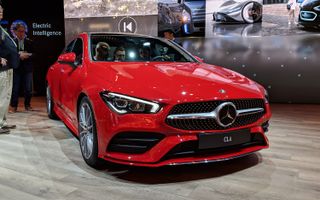
Mercedes-Benz CLA 250
In the midst of all the CES navel-gazing, Mercedes-Benz showed up to the conference with a never-before-seen production car. And what's even stranger is that at its core, it's mostly just a good, old-fashioned sports sedan. The new CLA 250 is powered by a 2-liter, turbocharged four-cylinder, developing 221 horsepower and 258 pound-feet of torque. A 7-speed, dual-clutch automatic transmission drives the front wheels, or all four, depending on your preference. This isn't to say that the new CLA isn't clever, though — it'll be Mercedes' first semi-autonomous production car when it launches later this year, able to pilot itself on highways or while overtaking. And if the current generation CLA is any indication, it'll still likely start at well under $40,000.
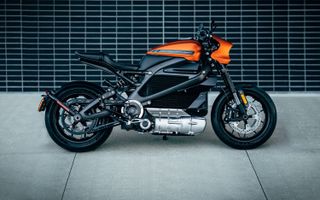
Harley-Davidson LiveWire
Harley Davidson is finally ready to deliver the electric motorcycle it's been teasing for so long. However, it won't be cheap. When the LiveWire goes on sale in August, it'll command a $30,000 price tag. That's three times more expensive than startup Zero's cheapest electric motorcycle — plus, the LiveWire has a short range of only about 110 miles. It's a very different kind of Harley, even down to its design. It's certainly more of a modern sport bike than a '70s throwback, and we dig it.

BMW Vision iNEXT
BMW's Vision iNEXT is less a prototype at this point and more of a statement of intent for the German automaker. The crossover won't launch until 2021, but BMW provided us with an early look (using VR) at the car's cabin experience and interface, driven by the company's Intelligent Personal Assistant. The blending of automation with AI-sourced recommendations about your commute, as well as the iNEXT's elegant and airy interior, lends a pleasant vibe to the concept. While the iNEXT that will debut in two years won't be fully autonomous, we like the shape that BMW's concept is taking — and there's no denying that the car looks phenomenal, too.
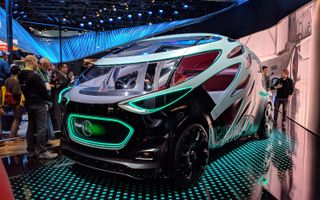
Mercedes-Benz Vision Urbanetic
Mercedes-Benz isn't trying to rethink only the personal mobility experience — it's working on public transportation solutions as well. That's where the Vision Urbanetic comes in. Autonomy is only the beginning — the Urbanetic, with its pod-like alien shape, mix of materials and prominent implementation of lighting, is actually built to support many different types of modular body styles. Theoretically, the more passenger-friendly rounded cabin can be replaced with a cargo space for commercial applications. This opens up a wealth of potential for self-driving fleets, and the net result for cities should be clean and efficient transportation, which could help relieve the gridlock of modern motoring.

BMW Riderless Motorcycle
If you ride, you're likely rolling your eyes at the phrase "riderless motorcycle." Rest assured, BMW isn't trying to keep you from your bike. Rather, the company brought this special R 1200 GS to CES to demonstrate what the technology could mean for rider safety. Gyroscopes help keep the bike upright and moving, with the help of adaptive cruise control and emergency braking systems. BMW envisions that these technologies could be used to help educate new riders, correct steering and lean angle in crash avoidance situations, and eventually communicate with other vehicles on the road to prevent collisions. While the bike wasn't strictly self-piloted during our demo (it was actually remote-controlled), the potential to save lives is enormous.
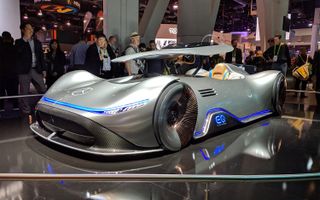
Mercedes-Benz Vision EQ Silver Arrow
Mercedes-Benz channeled its storied history in motorsport when it crafted the Vision EQ Silver Arrow: a fully electric, single-seater prototype inspired by the legendary W 125 Silver Arrow of 1937. But unlike most slick-looking concept cars, this one actually runs. Under the silky and silvery carbon fiber shell beats a 750-horspower electric motor (550 kilowatts), cooled by prominent vents slicing through the side of the body. The partly exposed fenders, massive copper wheels and wheel covers play perfectly against the classic Silver Arrow profile. AMG's upcoming Project One may represent Mercedes' tried-and-true flagship hypercar, but the Vision EQ inspires our imaginations.

Audi Aicon
Like BMW's Vision iNEXT, the Audi Aicon is a semi-autonomous electric car intended to launch in 2021. And, like the Vision iNEXT, CES 2019 was not its first rodeo, as it's bounced around other auto shows in the past. However, if BMW's prototype is laid back luxury,, then Audi's is downright comatose. Although the car assumes more of a conventional three-box profile, the cabin is extremely long, which allows the seats to recline almost fully. It would be a perfect platform to experience the in-car virtual reality tech Audi is working on with its partners at Holoride, in which passengers don Oculus Rift headsets and the car's every movement translates in real time to the VR world.
Photo Credit: Tom's Guide
Sign up to get the BEST of Tom’s Guide direct to your inbox.
Upgrade your life with a daily dose of the biggest tech news, lifestyle hacks and our curated analysis. Be the first to know about cutting-edge gadgets and the hottest deals.
Adam Ismail is a staff writer at Jalopnik and previously worked on Tom's Guide covering smartphones, car tech and gaming. His love for all things mobile began with the original Motorola Droid; since then he’s owned a variety of Android and iOS-powered handsets, refusing to stay loyal to one platform. His work has also appeared on Digital Trends and GTPlanet. When he’s not fiddling with the latest devices, he’s at an indie pop show, recording a podcast or playing Sega Dreamcast.
